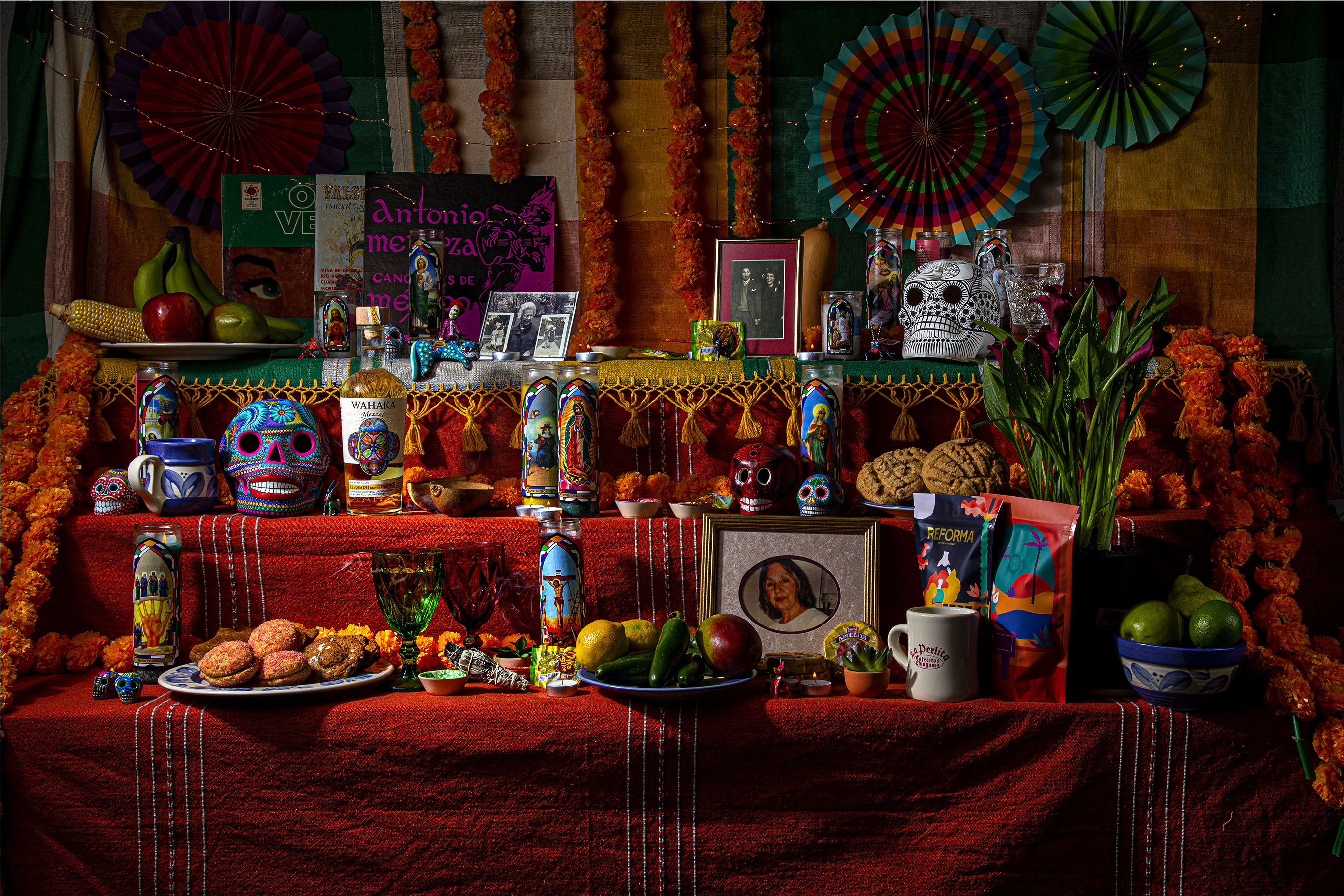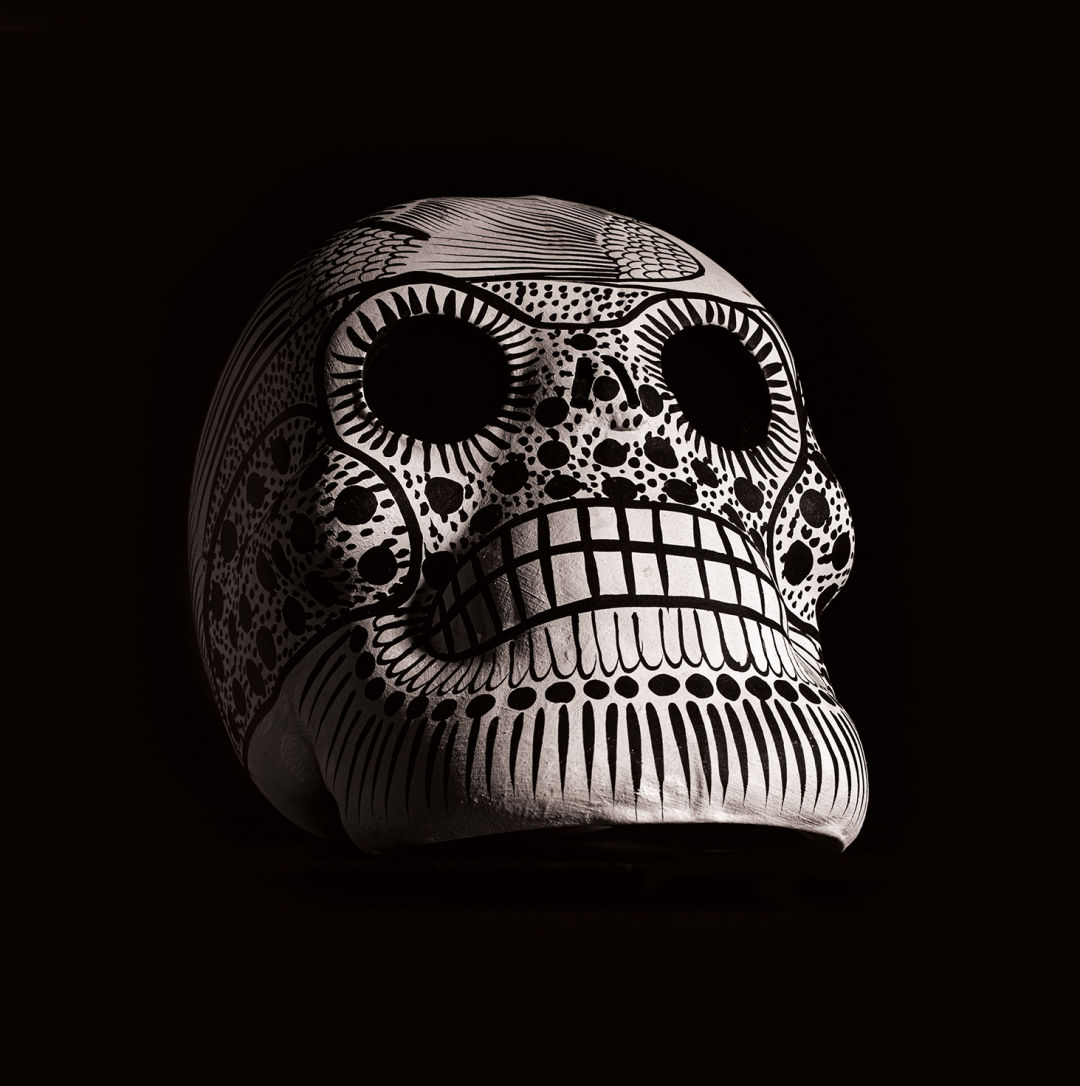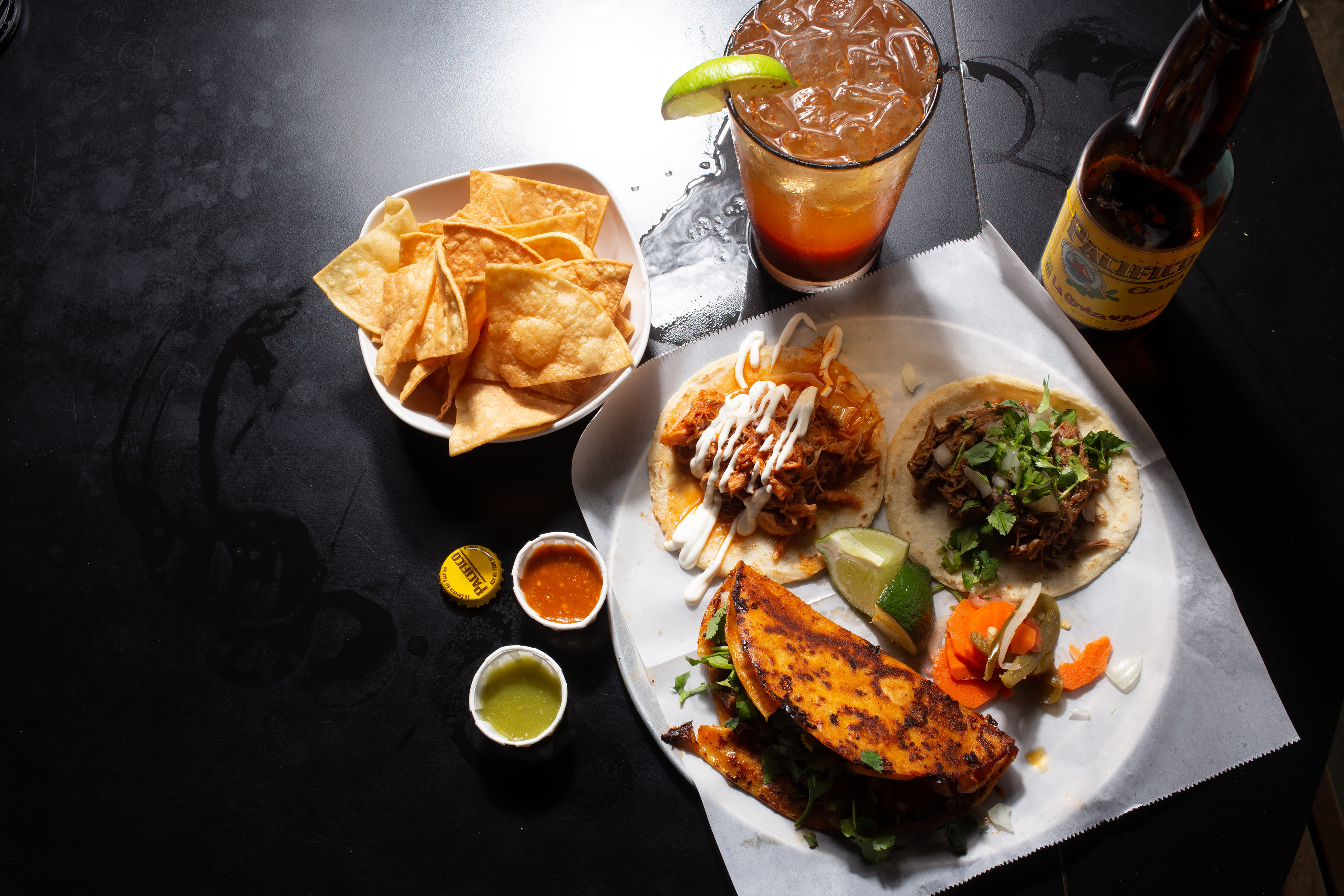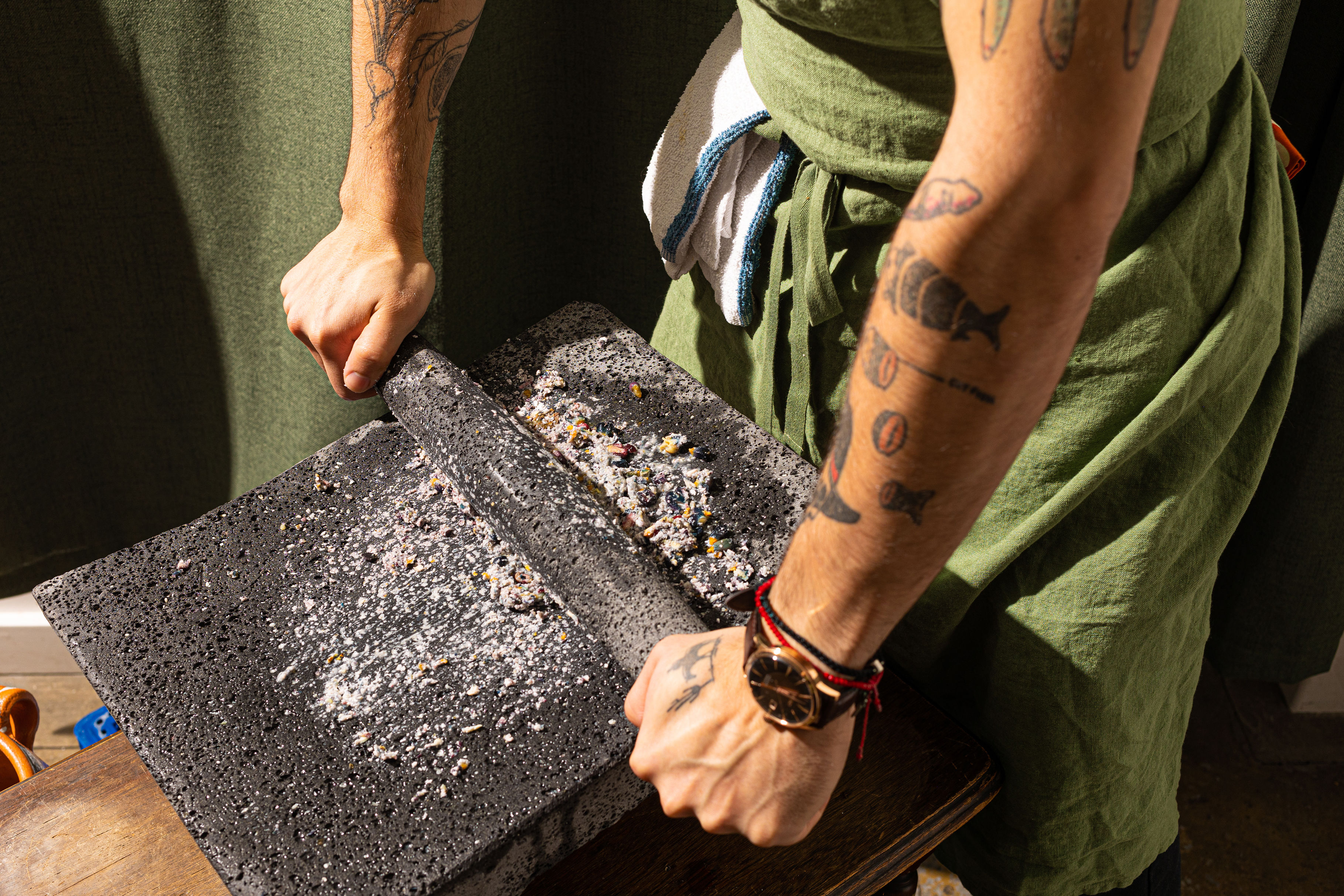
The Importance of Ofrendas on Día de los Muertos

Clay Dia de los Muertos skull from El Interior
Image: Michael Novak
For many Latinos, Día de los Muertos—the multiday Mexican holiday that runs November 1 and 2—is a time to celebrate. With elaborately decorated altars, or ofrendas, it’s about remembering rather than mourning friends and family members who have died. The holiday itself has grown in popularity for its colorful yet macabre take on the afterlife. But before citywide Day of the Dead festivals and altars as “art objects,” José González, executive artistic director of Portland’s Latino arts and culture center Milagro, says, “It was just what you did.”
Since 1995, González and Milagro artistic director Dañel Malán have been putting on a Día de los Muertos festival with performances, community events, and, of course, altars. While they vary in size and decoration, most ofrendas include photographs of late friends and relatives, candles and lights, pictures of Catholic virgins (Virgen de Guadalupe) or saints (San Miguel), food and drink, toys, Pan de Muerto (bread of the dead), marigolds, and anything that reminds someone of the dearly departed.
“The tradition has a lot of different ideas, but I think the key idea is that on the Day of the Dead [the deceased] come back to visit. So the altar is also a place to welcome them, to show them that you still care,” González says. “If someone has meaning to you, this is an opportunity to revisit that meaning and celebrate their life.”

“The tradition has a lot of different ideas, but I think the key idea is that on the Day of the Dead [the deceased] come back to visit. So the altar is also a place to welcome them, to show them that you still care,” José González says.
Image: Michael Novak
Anatomy of an Altar
We reached out to local Mexican/Mexican American/Latinx creators, makers, and businesses to help decorate our own ofrenda.
Xico
As important as what’s on your table is the tableware itself. We picked ours up at Xico, the Mexican restaurant on SE Division serving everything from ceviche to Yucatán smoked pork. These striking blue flower plates, mugs, and colorful goblets are available for purchase.
Graziano y Gutierrez
Founded by Alejandro Gutierrez and Samuel Graziano, Graziano y Gutierrez works with textile makers in Chiapas and Oaxaca, Mexico, and repurposes fabrics for subtle yet detailed apparel, from jackets to shorts to custom ordered suits or garments. We used their fabrics to line our ofrenda levels.
Wahaka
Mezcal Eduardo “Lalo” Belaunzaran was born in Mexico City, but his time in Paris shaped his passion for good food and even better spirits. Now, Belaunzaran lives in Portland, where he’s a fervent importer of Mexican libations, including Wahaka Mezcal, owned and produced by an indigenous Zapotec family. ¡Arriba, abajo, izquierda, derecha, al centro, y pa’ dentro!
Talarico’s Produce
This family-operated, open-air produce market on SE Hawthorne offers locally grown fruits, veggies, and more. Owners Myles and Erica Talarico started the shop in 2017 with convenience, quality, and flavor in mind. Add color to your own ofrenda with fresh produce, and then indulge yourself with a snack when the time comes to disassemble.
La Reinita
The owner of this beloved local bakery pop-up, Cortney Morentin, announced in July she was closing up shop. But you can pick up plenty of conchas, pan dulce, and other treats for your sweet-toothed loved ones elsewhere, including at Matutina and Tienda Santa Cruz.
El Interior
You can find these handcrafted, one-of-a-kind ceramic creations (also at top) from El Interior at the regular Portland Saturday Market and online. Owned by Laura Gutierrez, El Interior offers colorful skulls, table runners, dolls, jewelry, and more—all created in Mexico.
Reforma Roasters/La Perlita
Coffee isn’t always just about flavor profiles and roasting styles: Reforma Roasters coffee offers nostalgia in a bag with their Abuelita, Con Leche, and Frutas Dulces blends. Pick up a bag (and this mug) at La Perlita in the Pearl.




